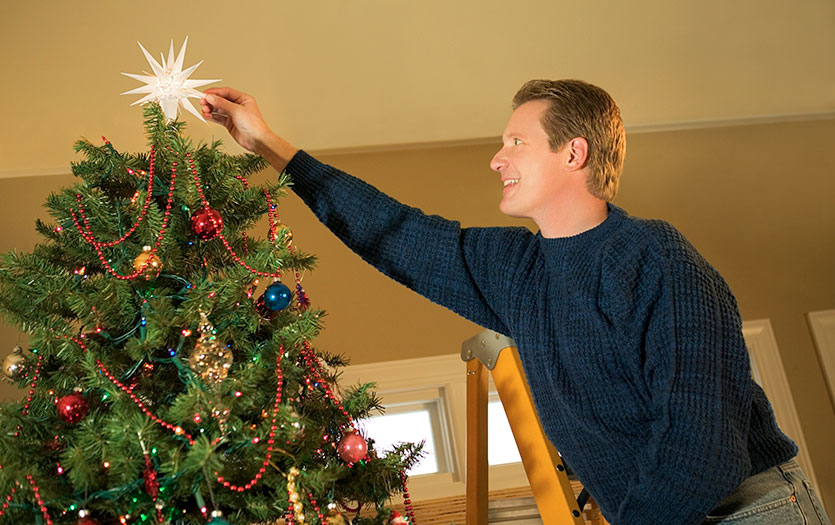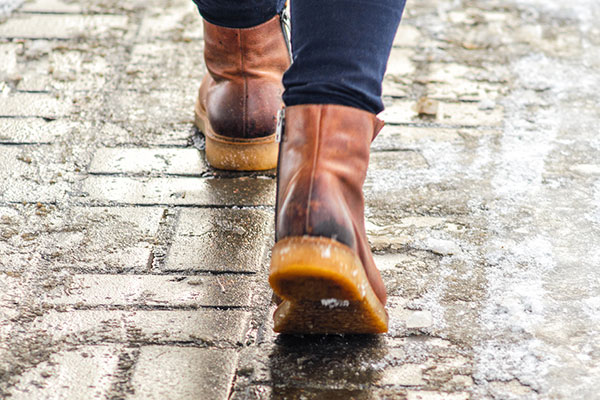
This post was written by Carolyn Sharrock-Dorsten, DPM, PPG – Podiatry, Bryan, Ohio.
As the winter months settle over the area, it’s time to start preparing for colder temperatures. The frigid weather can have harmful effects on our bodies and prevention is essential. According to the Centers for Disease Control and Prevention (CDC), on average, 1,300 people die each year due to excessive exposure to the cold. Being prepared is the best defense against cold weather foes like frostbite and hypothermia.
Frostbite
Frostbite is an injury to the skin or tissue caused by freezing when the body slows circulation to extremities to keep vital organs warm. The early stage, known as “frostnip”, includes redness, tingling and pain in the skin. Frostnip is a mild form of frostbite and leaves no permanent damage.
Frostbite, however, if left unchecked, can leave skin looking bluish-white or gray-yellow with a firm waxy texture. Frostbite can lead to severe injury if it progresses with extended cold exposure. The two types of frostbite are:
- Superficial frostbite – involves the epidermis, dermis, and subcutaneous tissue. The skin can often appear red then turn white or pale in color.
- Deep frostbite – can cause damage to the skin, deep connective tissue, muscles, tendons, nerves and bones. The tissue may turn black and in severe cases and could lead to amputation.
The most common body parts affected by frostbite include fingers, nose, ears, toes, chin and cheeks, with the foot and ankle making up 47% of frostbite cases. Certain medical conditions increase the likelihood of frostbite including diabetes, vascular disease and Raynaud's disease. Neuropathy (nerve damage) may also limit the ability to detect early signs of frostbite. If a person has had a history of frostbite, they are more likely to have a recurrence in the same area. Also, improper clothing or protection can lead to frostbite. Therefore, children, the elderly, homeless, hunters and hikers are all more susceptible and prone to frostbite if they are outdoors for extended periods of time in frigid weather.
How to treat frostbite
If you see frostbite on your skin or another individual, it’s important to begin treatment slowly and gradually in "tepid" water for 20-30 minutes. Also, be sure not to rub or massage the area because it may cause further damage to the underlying skin structures. If you don’t have access to water, use body heat like under an arm. It’s imperative that you don’t use heat from a fireplace, stove, heat lamp, heating pad or radiator because they can cause burns. If you see blisters, blackened skin or have pain seek professional help immediately or go to the E.R.
Hypothermia
Prolonged exposure to the cold can also lead to hypothermia, an abnormally low body temperature. Unfortunately, body heat is lost faster than it’s produced and can lead to serious injury or fatality. Hypothermia usually occurs in extremely cold weather, but it can happen in warmer weather, too. Cooler temperatures, above 40 degrees F, can have the same effect especially if your body is chilled from rain, perspiration or submersion from falling through the ice of a lake or pond, thus creating the perfect conditions for hypothermia.
Hypothermia also affects the brain, interfering with a person’s ability to think clearly or move well. The warning signs of hypothermia in adults include shivering, exhaustion or feeling tired, confusion, fumbling with hands or stumbling, memory loss, drowsiness and slowed speech. In babies and infants, it manifests as low energy levels and bright red skin that is cold to the touch.
If hypothermia is suspected, take a person's body temperature. Anything below 95 degrees Fahrenheit needs immediate medical attention. If a person is unconscious and has no pulse, call 911 and begin CPR until medical help arrives.
Tips to prevent cold injuries
- If possible, limit time outdoors in cold or extreme temperatures.
- Drink plenty of water and avoid alcohol and illicit drugs.
- Dress appropriately – include hats, mittens/gloves, protective clothing and wear loose layers that trap your body heat.
- First Layer: Moisture-wicking synthetic material, so skin is never damp.
- Second Layer: Wool or fleece are great insulators.
- Third Layer: Wind and waterproof jacket, boots, and pants with hat, facemask and scarf.
- Avoid sitting or lying on cold surfaces like the ground.
- Prepare for weather-related power outages or car accidents that may leave people stranded or vulnerable in the cold.
- Fuel your body with enough carbohydrates for short energy bursts along with protein and fat for longer sustainable energy.
- Prepare a winter car survival kit that includes:
- Warm blanket (foil lining recommended to reflect body heat)
- Extra clothing
- Air activated hand and toe warmers (not placed directly on the skin)
- Snacks (granola bars, beef jerky, trail mix)
- Water
- Flares
- Shovel
- Flashlight
- Sand or cat litter
- Tire repair kit
- First aid kit and necessary medications
- Cell phone charger
A little preparation can go a long way. So, enjoy the outdoors, but remember to play it safe in the cold!



